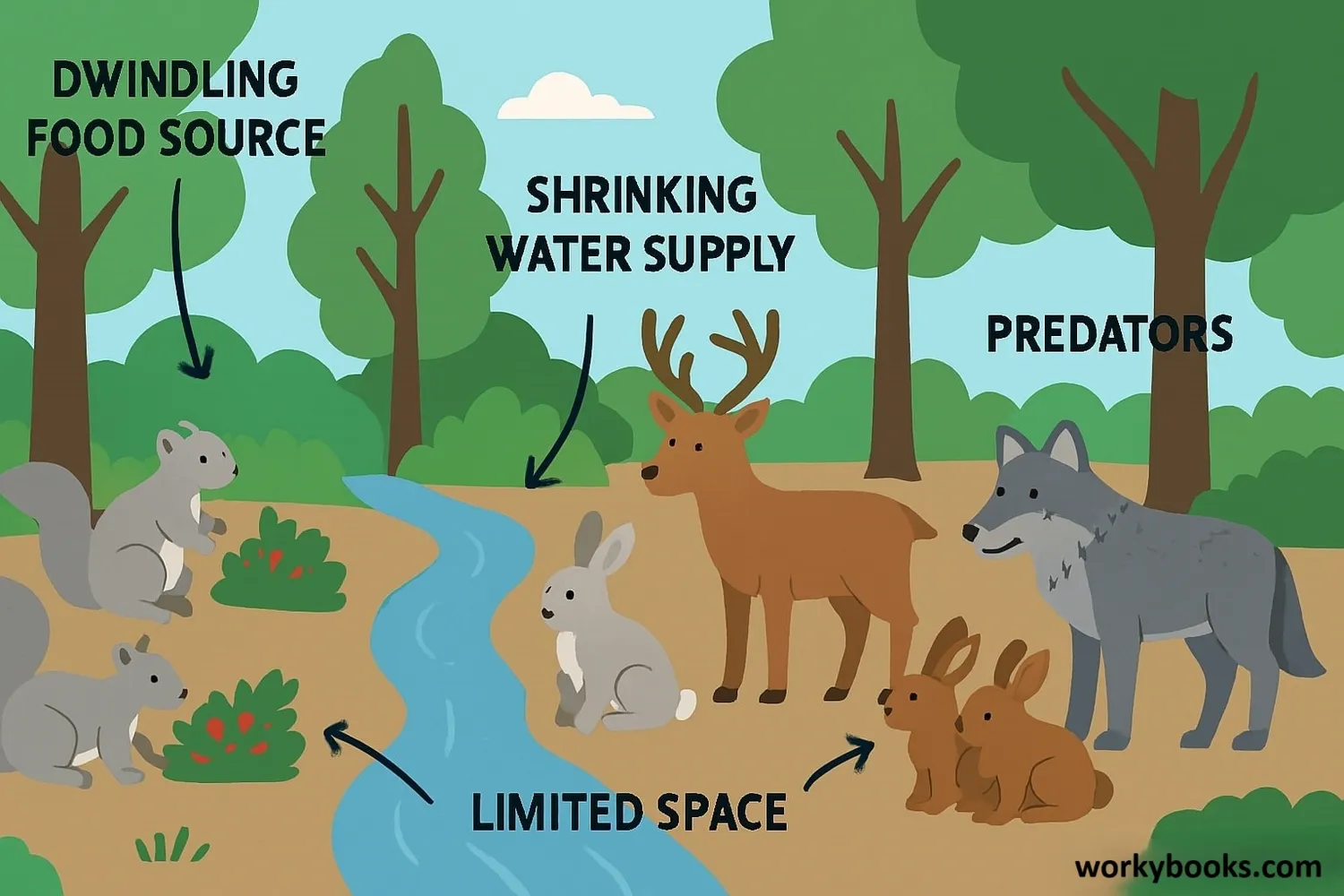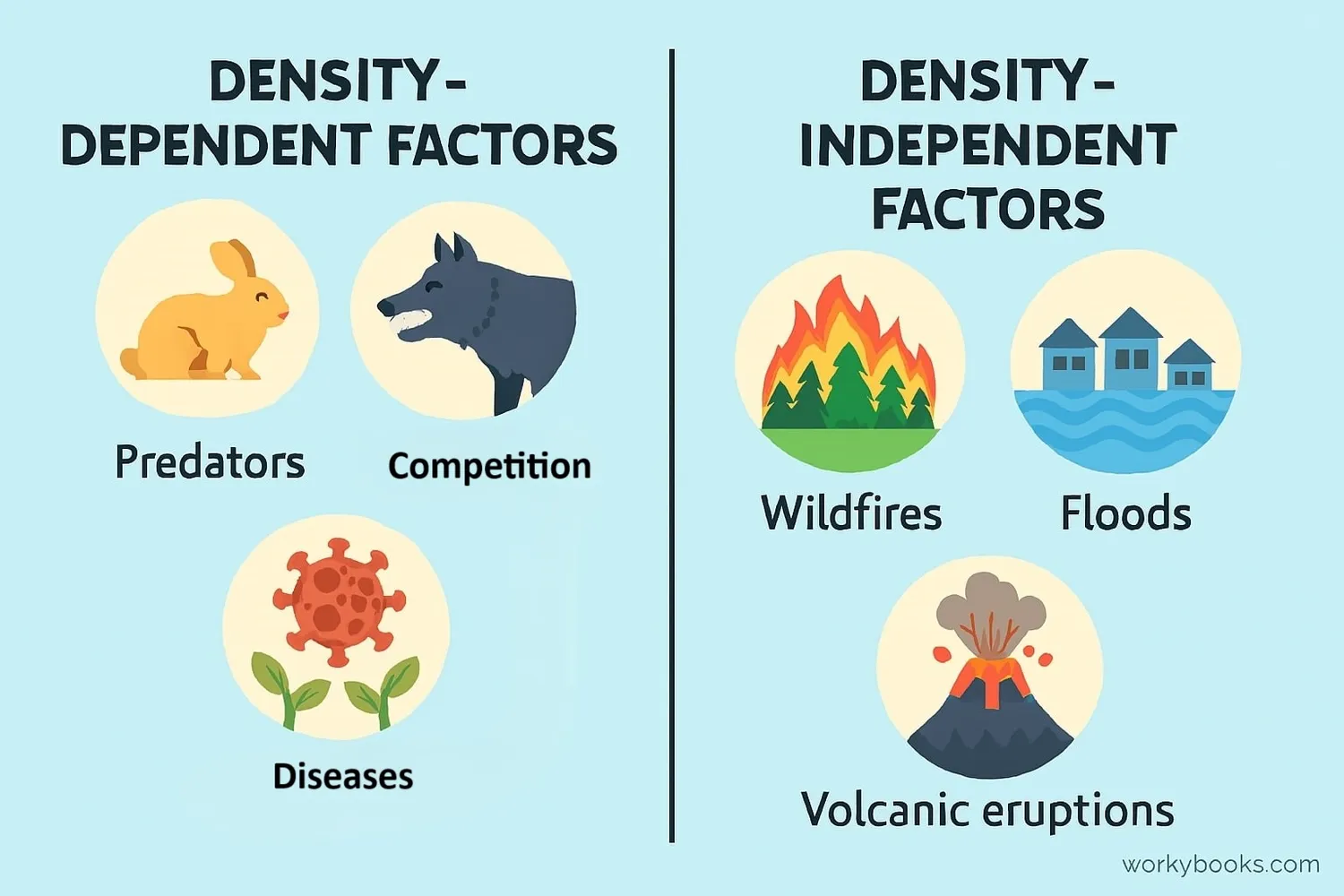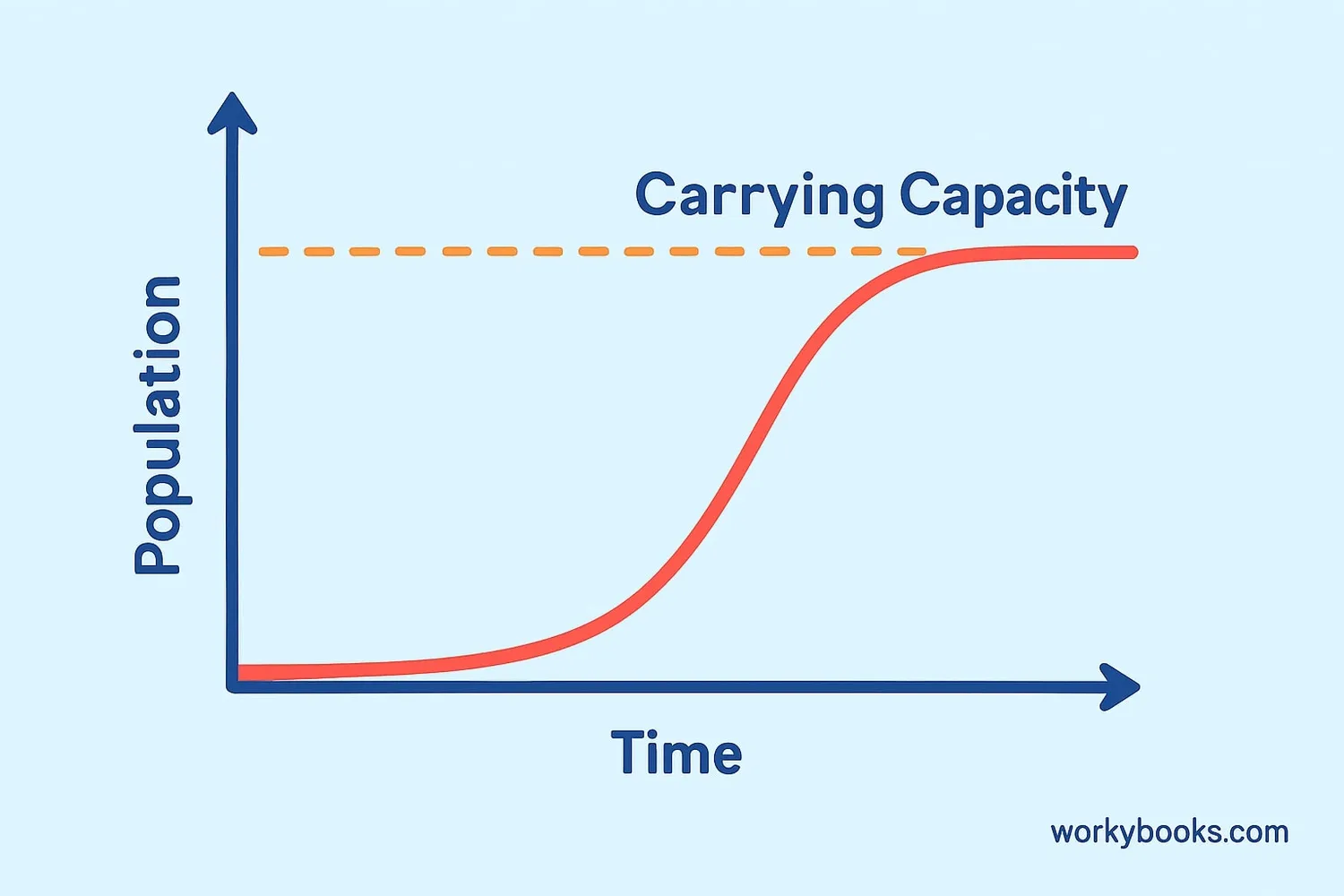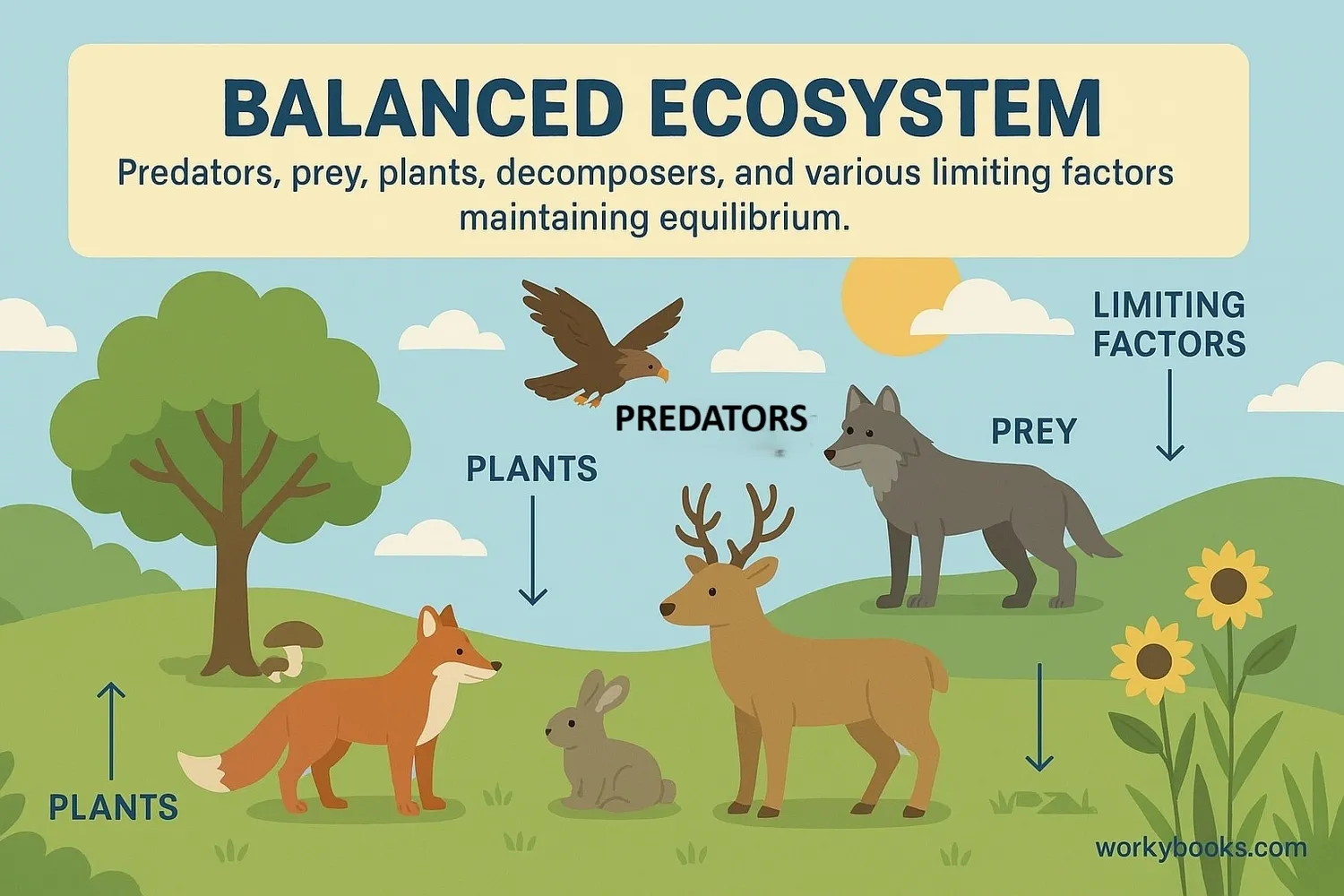Limiting Factors in Ecosystems - Definition, Examples, Quiz, FAQ, Trivia
Discover how nature balances populations through resource availability and environmental constraints
What are Limiting Factors?

Limiting factors are environmental conditions that control how many individuals can live in an ecosystem. They're like nature's way of saying "this ecosystem can only support so many plants and animals."
Think of an ecosystem as a house with limited space and resources. Just like a house can only hold so many people before running out of food, water, or space, ecosystems have natural limits too. These factors help maintain balance so that no single species takes over the entire area.
Food Availability
The amount of food in an ecosystem determines how many animals it can support
Water Supply
Access to clean water limits populations in many environments
Space
Available territory for nesting, hunting, and living
Nature's Balance
Without limiting factors, a single rabbit species could cover the entire Earth in just a few years! Limiting factors prevent this from happening.
Types of Limiting Factors

Scientists categorize limiting factors into two main types:
Density-Dependent
Factors that change based on population size
Density-Independent
Factors that affect populations regardless of size
Density-Dependent Factors
These factors become stronger as populations grow larger:
- Predation: More prey means more food for predators
- Competition: More individuals means more competition for resources
- Disease: Diseases spread more easily in crowded populations
- Parasites: Parasites transfer more easily when hosts are close together
Density-Independent Factors
These factors affect populations regardless of their size:
- Natural disasters: Wildfires, floods, hurricanes
- Weather: Extreme temperatures, droughts
- Human activities: Pollution, deforestation, construction
- Geological events: Volcanic eruptions, earthquakes
Carrying Capacity

Carrying capacity is the maximum number of individuals an ecosystem can sustainably support. It's determined by the limiting factors we've discussed.
Think of carrying capacity like the passenger limit on a bus. The bus has a maximum number of people it can safely carry based on available seats, air, and space. Ecosystems work the same way - they have a natural limit to how many organisms they can support long-term.
Population Dynamics
When populations approach carrying capacity:
- Birth rates decrease
- Death rates increase
- Migration to new areas may occur
- Competition for resources intensifies
Growth Phase
Population increases rapidly when resources are abundant
Stabilization
Growth slows as resources become limited
Carrying Capacity
Population stabilizes at the ecosystem's maximum support level
Why Limiting Factors Matter

Limiting factors are essential for maintaining healthy ecosystems. They:
Maintain Balance
Prevent any single species from dominating the ecosystem
Promote Diversity
Allow multiple species to coexist by limiting competition
Protect Resources
Prevent overconsumption of essential resources like water and plants
When humans disrupt natural limiting factors (by removing predators, introducing invasive species, or polluting environments), ecosystems can become unbalanced. This can lead to:
• Overpopulation of certain species
• Extinction of native plants and animals
• Depletion of natural resources
• Damage to soil and water quality
Real World Example
In Yellowstone National Park, the reintroduction of wolves (a limiting factor) helped control the elk population, which allowed willow and aspen trees to recover, which in turn supported beaver populations and improved river ecosystems.
Limiting Factors Quiz
Test your knowledge with this quiz about limiting factors and ecosystem balance!
Frequently Asked Questions
Here are answers to common questions about limiting factors:
Ecosystem Trivia
Discover amazing facts about limiting factors and ecosystem balance:
Rabbit Reproduction
Without limiting factors, a single pair of rabbits could theoretically produce over 184 billion descendants in just 7 years! Thankfully, predators, food shortages, and disease keep rabbit populations in check.
Island Ecosystems
Islands show limiting factors in action. Smaller islands support fewer species than larger ones because they have fewer resources and less diverse habitats. This pattern is called the species-area relationship.
Deep Sea Limits
In the deep ocean, food is the ultimate limiting factor. Some deep-sea creatures go months between meals! They survive with extremely slow metabolisms and efficient energy use.
Microscopic Limits
Even bacteria face limiting factors! In a petri dish with limited nutrients, bacteria populations follow the same growth curve as larger animals, eventually stabilizing at the dish's carrying capacity.


